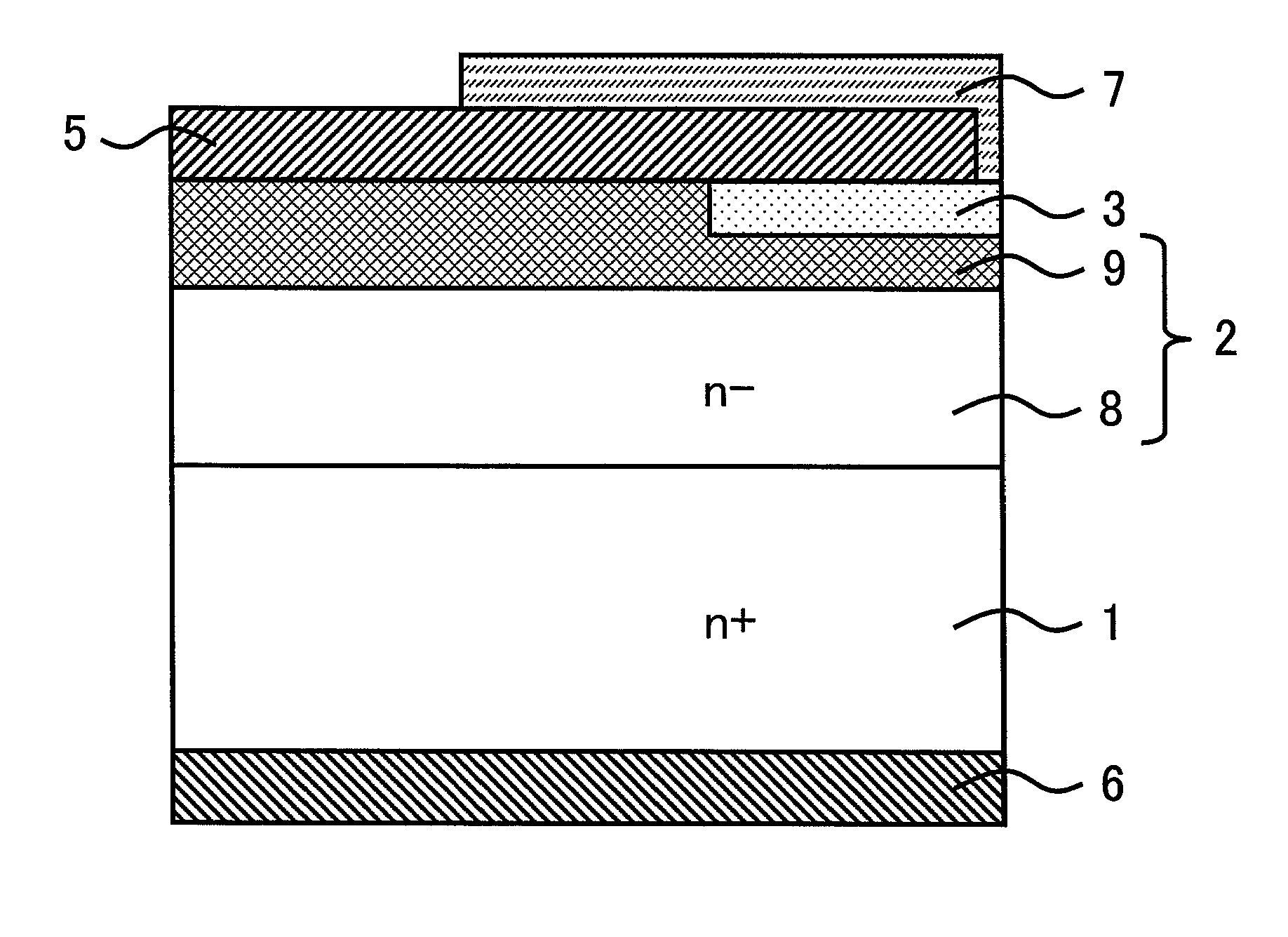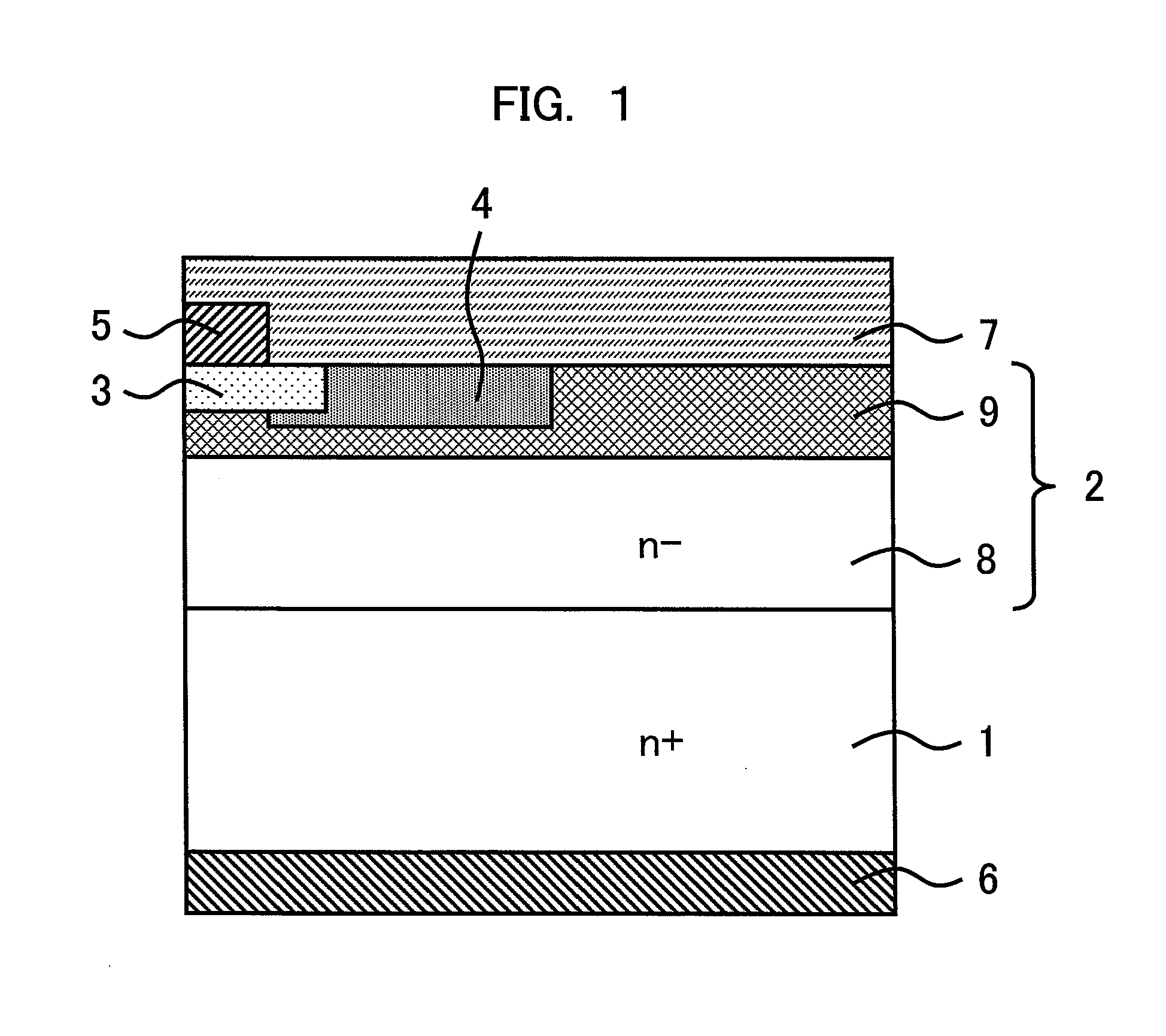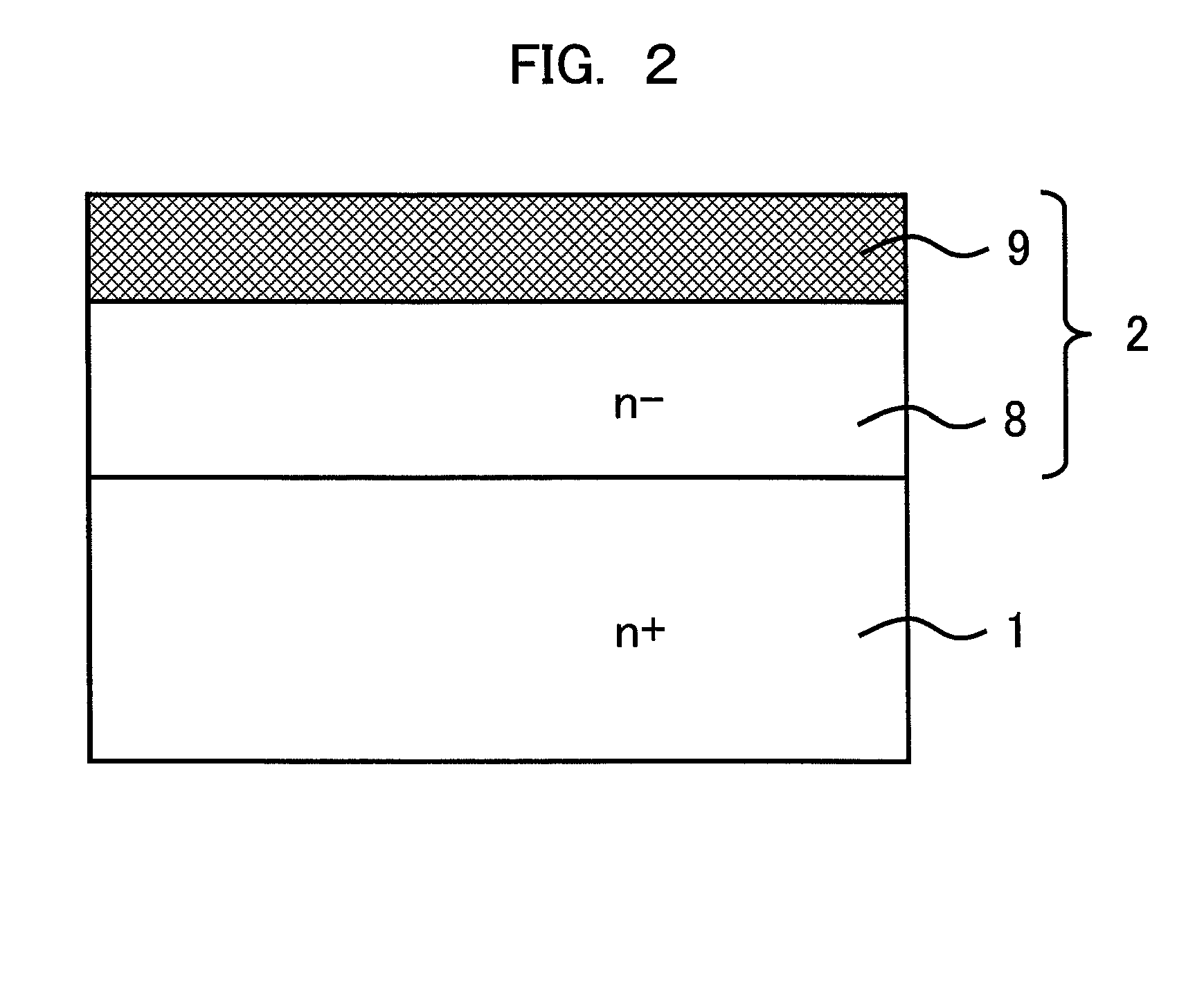Semiconductor device
- Summary
- Abstract
- Description
- Claims
- Application Information
AI Technical Summary
Benefits of technology
Problems solved by technology
Method used
Image
Examples
first embodiment
[0028]FIG. 1 is an explanatory diagram showing a sectional structure of a termination part of a semiconductor device of a first embodiment of the present invention. The semiconductor device according to the first embodiment is a diode including a low impurity concentration (n−-type) SiC drift layer 2 of a first conductivity type (n type) (hereinafter, referred to as “n−-type SiC drift layer 2”) formed on a high impurity concentration (n+-type) SiC substrate 1 of the first conductivity type (hereinafter, referred to as “n+-type SiC substrate 1”), a p-type semiconductor region 3 of a second conductivity type (p type) opposite to the first conductivity type, a p-type termination region (p-type semiconductor region) 4 of the second conductivity type (p type), an anode electrode 5 provided on a part of a front surface of the n−-type SiC drift layer 2, a cathode electrode 6 provided on a back surface of the n+-type SiC substrate 1, and an insulating film 7 provided on a part of the n−-typ...
second embodiment
[0056]The n+-type SiC substrate 1 having the n−-type second semiconductor layer 9 formed on the entire upper surface of the n−-type SiC drift layer 2 is used in the first embodiment, but the n−-type second semiconductor layer 9 may be formed in a part of the region on the upper surface of the n−-type SiC drift layer 2 so as to cover a pn junction formed in a lateral direction. This is because the device withstand voltage at the time of applying a reverse voltage depends on the structure of the active region and the termination structure and the device withstand voltage can be improved also by the increase of the withstand voltage by the termination structure. FIG. 14 and FIG. 15 show the sectional structures in this case. In the case of these structures, in addition to the effects of the first embodiment, there is an advantage that the termination structure can be designed separately from and independently of device design.
[0057]FIG. 14 shows an example in which the n−-type second s...
third embodiment
[0060]FIG. 16 is an explanatory diagram showing a sectional structure of a semiconductor device of a third embodiment of the present invention. The third embodiment provides an example in which a so-called trench-gate junction field-effect transistor (JFET) is formed in an active region. For avoiding complications, the gate electrode, the source electrode, and the insulating film 7 for protecting the front surface are omitted. The semiconductor device of the third embodiment is different from a general trench-gate JFET in that a stacked film formed of the n−-type first semiconductor layer 8 and the n−-type second semiconductor layer 9 whose impurity concentration is higher than that of the n−-type first semiconductor layer 8 is used as the n−-type SiC drift layer 2 and the pn junction of a gate and the JTE where the electric field may possibly concentrate are formed in the n−-type second semiconductor layer 9. The manufacturing method and structure other than that may be the same as...
PUM
 Login to View More
Login to View More Abstract
Description
Claims
Application Information
 Login to View More
Login to View More - R&D
- Intellectual Property
- Life Sciences
- Materials
- Tech Scout
- Unparalleled Data Quality
- Higher Quality Content
- 60% Fewer Hallucinations
Browse by: Latest US Patents, China's latest patents, Technical Efficacy Thesaurus, Application Domain, Technology Topic, Popular Technical Reports.
© 2025 PatSnap. All rights reserved.Legal|Privacy policy|Modern Slavery Act Transparency Statement|Sitemap|About US| Contact US: help@patsnap.com



